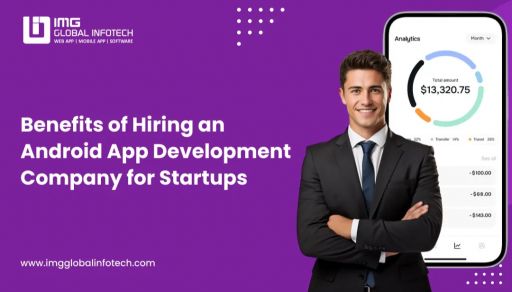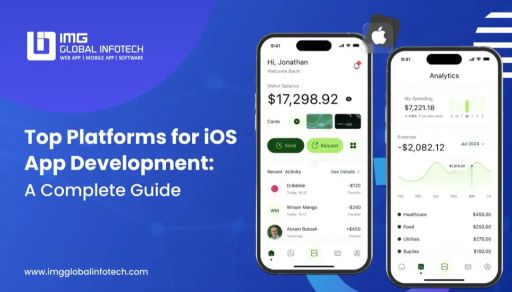Mobile App Metrics You Should Track In 2026
Mohit Mittal
Jul 05, 2025

After launching your mobile app, your journey has only just begun. Tracking the right performance metrics is vital to building a successful product and making data-backed decisions. These metrics not only guide your marketing strategies but also help in budget allocation, user engagement, and long-term business growth.
Measuring and tracking Mobile App Metrics is a critical component of any digital marketing or product development strategy. Quality analytics help you avoid wasteful spending, discover growth opportunities, and continually improve your app experience. To accomplish this, it’s essential to identify, understand, and regularly evaluate the performance metrics that show how well your app is doing and what changes are needed.
In this complete guide, we explore the most Important App Metrics to monitor in 2026. Whether you're developing a new product or scaling an existing app, these Mobile App KPI Metrics (Key Performance Indicators) can significantly impact your decisions and outcomes.
Why Mobile App Metrics Matter
With millions of apps on the market, tracking app performance has become more essential than ever. You need data to understand what’s working, what’s not, and how to evolve. Monitoring metrics helps you:
-
Optimize user acquisition
-
Increase retention and reduce churn
-
Improve customer lifetime value
-
Maximize ROI across channels
-
Detect bugs, bottlenecks, or broken experiences
-
Scale your app based on evidence, not assumptions
Let’s now break down Mobile App Success Metrics by category.
Read More - Top 15+ Mobile App Development Companies In 2026
Top Mobile App Metrics for Advertising Campaigns
Advertising is often the first step in user acquisition. Understanding these metrics will help you evaluate which channels bring valuable users and which ones drain your budget.
1. Click-Through Rate (CTR)
CTR = (Clicks / Impressions) × 100
Example: If your ad gets 500 clicks from 10,000 impressions, the CTR is 5%.
CTR helps you understand how appealing your ad is. A higher CTR means your audience finds your ad relevant. Low CTR might suggest you need a better headline, call-to-action (CTA), or visual. For instance, companies like Duolingo improved their CTR by 38% after optimizing their creatives and targeting.
2. Cost Per Click (CPC)
CPC = Total Ad Spend / Number of Clicks
This measures the cost efficiency of your ads. Lower CPC means you're acquiring traffic more economically. Benchmark your CPC across channels like Google Ads, Facebook, Instagram, and TikTok. Use A/B testing to improve CPC by optimizing ad copy, bidding strategy, and targeting settings.
3. Cost Per Install (CPI)
CPI = Total Ad Spend / Number of Installs
This is one of the most essential Mobile App Metrics to Track. For example, if your spend is $1,000 and you receive 500 installs, your CPI is $2. CPI varies across categories. Gaming apps typically see a lower CPI, while finance or healthcare apps have higher acquisition costs.
4. Return on Investment (ROI)
ROI = (Revenue – Cost) / Cost
It’s essential to track ROI for paid campaigns. If you're spending more than you're earning, your campaign isn't sustainable.
Example: If you spend $2,000 and earn $3,000, your ROI is 50%. Companies often use ROI to reallocate budgets between campaigns that convert well versus those that don’t.
Make sure to leverage Digital Marketing Services that can help optimize your ad spending and improve ROI with targeted strategies and insights.
Mobile App Metrics to Track for User Retention
Getting installs is important but keeping users engaged is what drives long-term success.
5. Retention Rate
Retention Rate = (Returning Users / Total Users) × 100
Example: Out of 1,000 new users, if 300 return after a week, your Day 7 retention is 30%.
Retention shows how engaging and useful your app is. Track retention daily, weekly, and monthly. Apps like Spotify invest in onboarding and personalized recommendations to keep retention rates high.
6. Daily Active Users (DAU) and Monthly Active Users (MAU)
These help you measure engagement. DAU indicates how many users are engaged on a daily basis, while MAU tracks over 30 days.
Example: A gaming app with 20,000 MAU and 5,000 DAU has a stickiness of 25%. Use these values to analyze user loyalty.
7. Stickiness Ratio
Stickiness = DAU / MAU
This shows how often users return. A higher percentage indicates strong product value and habit formation. Apps like WhatsApp and Telegram have high stickiness due to essential daily use.
Use insights from UI UX Design Services to improve user journeys and app experiences that promote stickiness.
Mobile App Metrics to Track Revenue Performance
Let’s dive into financial metrics that define how much value users generate for your business.
8. Customer Acquisition Cost (CAC)
CAC = Total Marketing and Sales Spend / Number of Customers Acquired
Track CAC across campaigns, platforms, and audiences. Lower CAC means better cost efficiency. Tools like Adjust or AppsFlyer can help attribute installs to correct channels.
9. Cost Per Loyal User (CPLU)
CPLU = Total Cost / Number of Loyal Users
If you spent $5,000 and gained 500 loyal users, your CPLU is $10. Combine CPLU with LTV to assess profitability.
10. Average Revenue Per User (ARPU)
ARPU = Total Revenue / Total Active Users
This reveals the revenue potential per user and helps you optimize monetization strategies. Use ARPU to compare organic vs paid user profitability.
11. Average Revenue Per Paying User (ARPPU)
ARPPU = Total Revenue from Paying Users / Total Paying Users
Example: If 100 paying users bring $2,000 revenue, ARPPU = $20. High ARPPU is common in subscription-based or freemium apps.
12. Lifetime Value (LTV)
LTV = ARPU × Average User Lifetime
LTV is one of the Top Mobile App Metrics. It shows how much revenue you can expect from a single user. High LTV gives room for higher marketing spend.
Benchmark: Ensure LTV is at least 3x CAC.
13. Break-Even Point
Break-even = CAC / ARPU
This tells you when you’ll start making a profit from each user. Track this to scale safely.
Also Read - Top AI Features Powering Next-Gen Mobile App Development
Performance Metrics for Product and UX Optimization
14. Session Length
Tracks how long users stay in your app per session. Longer sessions often indicate value.
Example: In a meditation app, a session length of 10+ minutes might be ideal.
15. Session Interval
Time between two sessions by a user. Helps measure how addictive or habitual your app is. Low session intervals show strong habit loops.
Use behavior analysis techniques available through Custom Software Development Services to analyze and personalize session intervals.
16. Screen Flow and Drop-Offs
Track user navigation and identify bottlenecks. Use heatmaps and user session recordings to enhance flows.
17. Crash and Error Reports
Keep crash-free sessions above 99%. Use tools like Firebase Crashlytics. High crash rates can severely impact retention.
18. User Feedback and Ratings
Respond to app store reviews. Use in-app surveys and Net Promoter Score (NPS) to improve features.
Organic Growth and User Virality Metrics
19. Virality (K-Factor)
K-Factor = Average Invites × Invite Conversion Rate
Example: If each user invites 2 people and 30% accept, K = 0.6. A K > 1 indicates self-sustaining growth.
20. Share Rate
% of users who share your app or content via social, SMS, or email. High share rate = strong word-of-mouth marketing. Influencer partnerships can amplify this.
Retention Health and Re-Engagement Metrics
21. Churn Rate
Churn = (Users Lost / Total Users) × 100
High churn signals a problem. Address with onboarding improvements and re-engagement strategies. Apps with smooth onboarding flows (like Notion) have lower churn.
22. Re-Engagement Rate
% of lapsed users who return after push notifications, emails, or ads. Retargeting can be a strong ROI tactic. Use personalized messages to increase effectiveness.
Advanced Mobile App Metrics to Consider
23. Feature Adoption Rate
Tracks how many users engage with a specific new feature. Helps validate product updates.
Example: If 10,000 users got the update and 2,000 used a new filter, adoption = 20%.
24. Funnel Conversion Rate
Conversion rate across onboarding or checkout steps. Identify where users drop off. Use this data to improve onboarding or cart abandonment.
25. Support Ticket Volume
Track how many users request help or complain. A spike may indicate UX or feature issues. Measure average resolution time.
26. Engagement Score
Combine metrics like session length, frequency, and feature use into a score to segment your users into low, medium, and high engagement tiers. Tailor messages to each tier for better conversion.
Over to You
As you've seen, Mobile App Metrics to Track cover a wide range of areas from advertising and revenue to engagement and retention. The key is to define your app’s goals and focus on the Top Mobile App Metrics that align with your stage of growth.
Whether you're measuring growth, revenue, retention, or engagement, these metrics provide clarity and control. But remember metrics only matter when they lead to action.
If you’re serious about building a data-driven app that performs well and delivers value, it’s best to partner with experienced experts like IMG Global Infotech, a leading Mobile App Development Company.
Start tracking today and turn your app into a business success story.
Mohit Mittal is the co-founder of a leading IT company with over a decade of experience in driving digital transformation and innovative tech solutions. With a strong background in software development, Mobile app development, E-commerce, business strategy, and team leadership, Mohit Mittal is passionate about helping businesses scale through technology. When not solving complex tech challenges, he enjoys sharing insights on emerging trends, entrepreneurship, and the future of IT.












